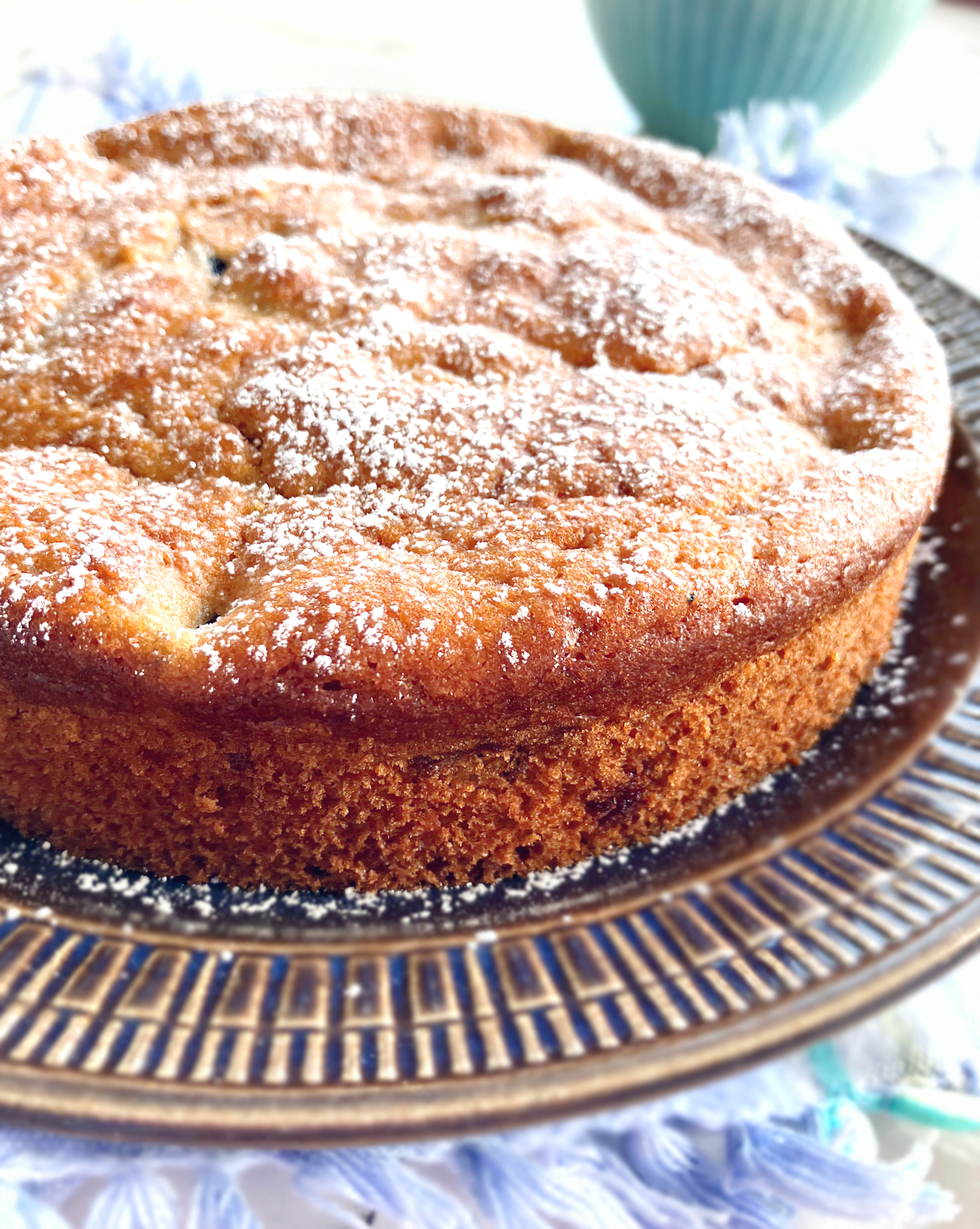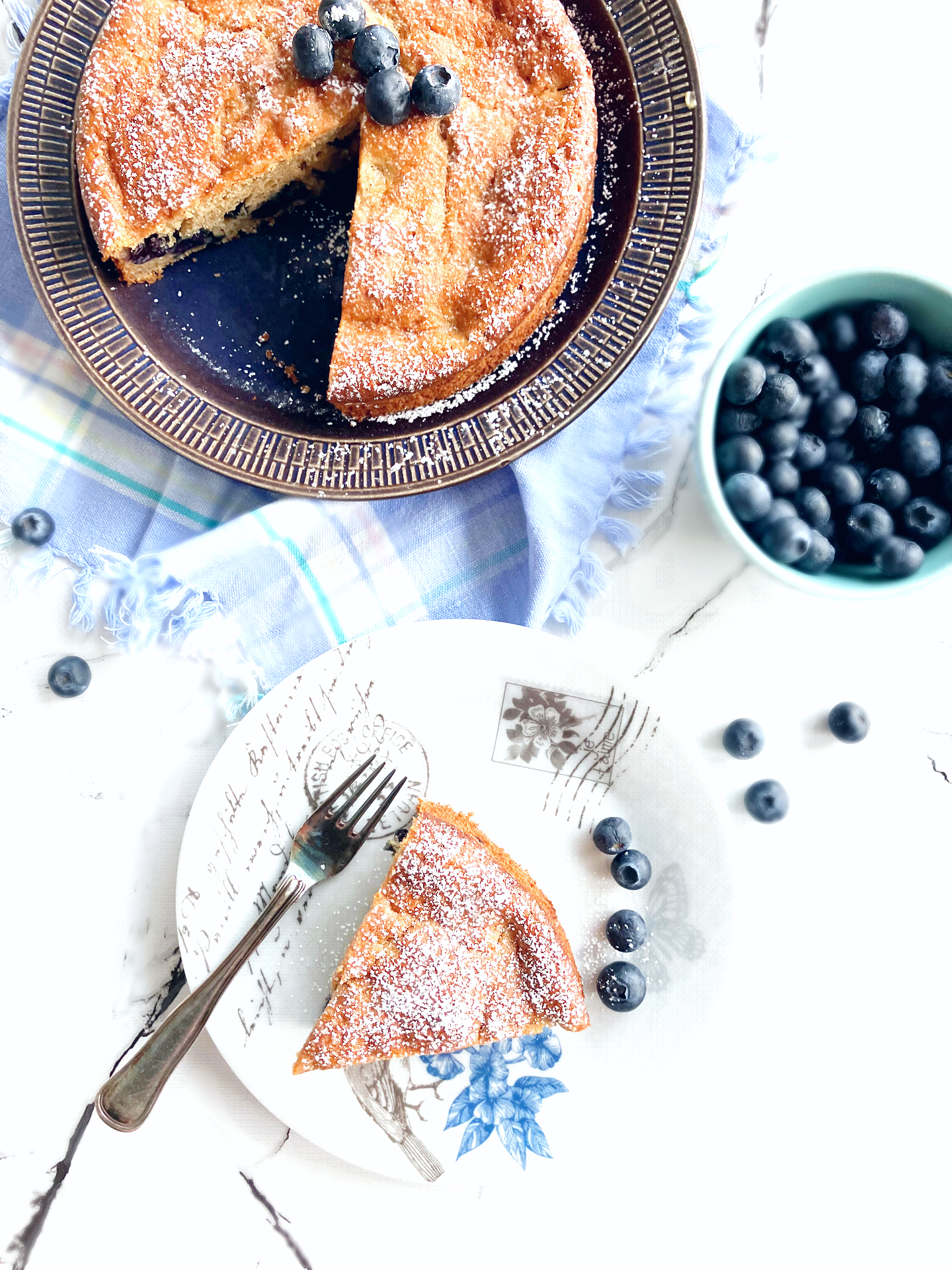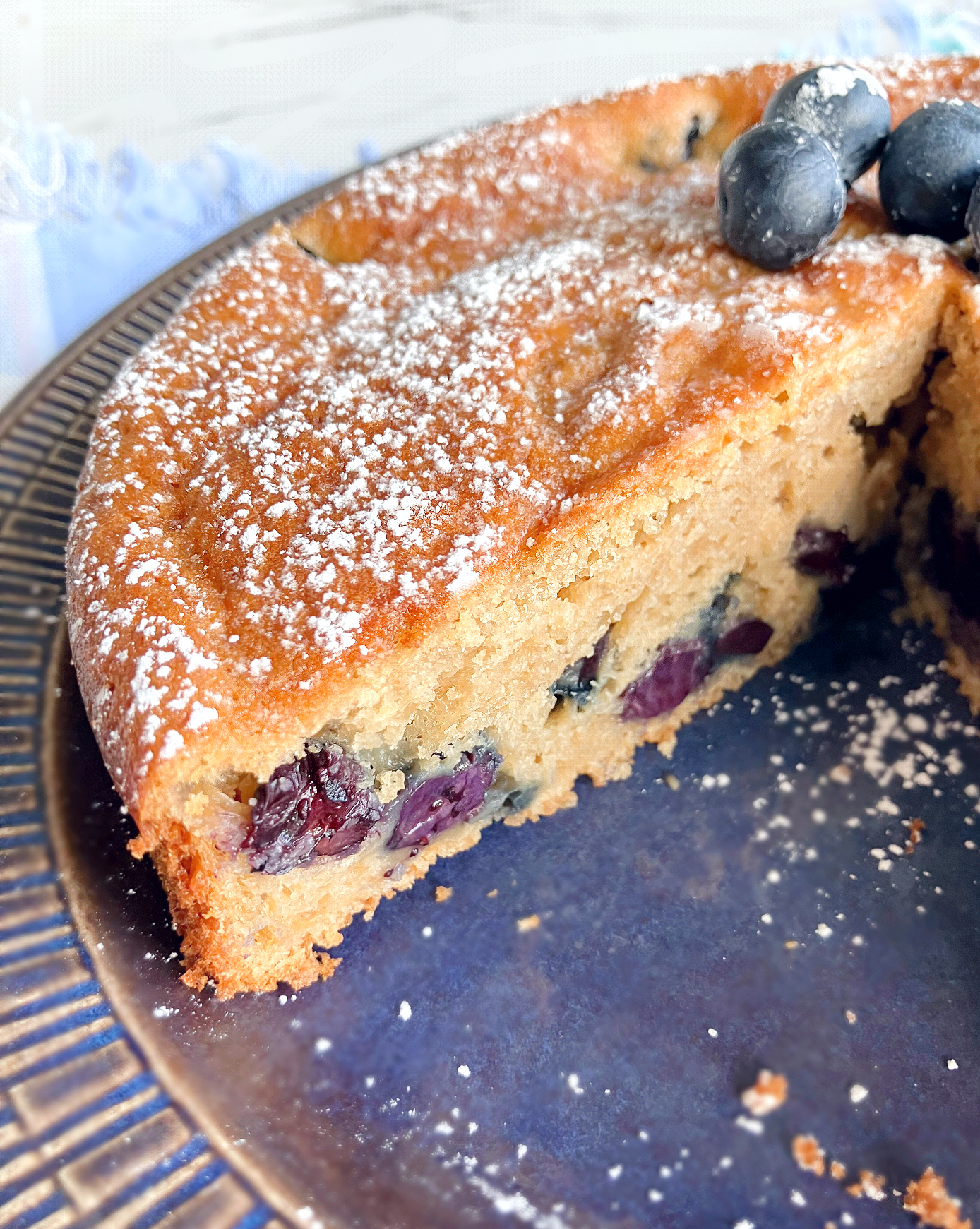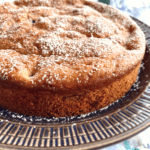Blueberry and Lime Spelt Cake with Coconut Sugar
If you’re after a cake that feels like a treat but isn’t too heavy or overly sweet, this lighter blueberry and lime spelt cake is just the thing. It’s packed with fresh fruit and wholesome ingredients, balancing gentle sweetness with bright, fresh flavours; perfect for those moments when you want something satisfying yet not too indulgent.
The cake is made with spelt flour, but this can be swapped out for plain (all-purpose) flour. If you are new to the wonders of spelt and would like to find out more, be sure to read my tutorial: The Beginner’s Guide to Spelt Flour.
Lighter blueberry and lime spelt cake
This lighter blueberry and lime spelt cake is perfect for those moments when you’re craving something sweet, but prefer a healthier, less heavy treat. I first baked it after the holidays, when the thought of another heavy dessert made me wince. I love indulgent treats, don’t get me wrong, but sometimes my body just says enough, and I find myself reaching for lighter meals and fresher flavours.
This cake is sweetened with coconut sugar, which gives it a lovely caramel colour and gentle flavour, without the overly processed hit of white sugar. It’s also lower in fat than a typical cake, thanks to Greek yoghurt, which adds moisture and a slight tang. Fresh blueberries and a splash of lime brighten the flavour, giving it a fresh, summery feel. That means the crumb is denser than something like a sponge or pound cake, but still soft and satisfying.
If you’re in the mood for something a little bit wholesome, but still feels like cake, this lighter blueberry and lime spelt cake might be just what you’re looking for.
Inspiration for this blueberry cake
I based this lighter blueberry and lime spelt cake on another favorite recipe of mine, raspberry spelt sponge cake. Both cakes use simple, wholesome ingredients and rely on Greek yoghurt to keep them moist while reducing fat content.
The raspberry cake features a delicious swirled berry sauce for extra flavour, but this time I wanted something with a bright, zesty twist. So, I swapped in whole fresh blueberries, which are one of my favourite berries to use in cakes. I also added a splash of lime juice to enhance the fruit’s natural sweetness.
Like the raspberry cake, this version uses coconut sugar instead of refined sugar, lending a gentle caramel note. The result is a light, tangy cake that’s satisfying without being overly indulgent.
The role of Greek yoghurt in lighter cakes
Greek yoghurt is a fantastic ingredient to add moisture and a subtle tang to cakes, especially when you want to reduce the amount of fat without compromising texture. It comes in various fat contents, from 0% (fat-free) to full-fat varieties. For this cake, I used 0% Greek yoghurt because that’s what I had on hand, but I often use 10% Greek yoghurt interchangeably. Using full-fat or 10% Greek yoghurt will contribute to a richer, creamier crumb, while 0% makes the cake lighter but can result in a slightly denser texture.
If you don’t have Greek yoghurt on hand, you can substitute with regular plain yoghurt or even sour cream. Keep in mind that these substitutions might alter the final texture and flavour slightly. Regular yoghurt is usually thinner, so your batter might be a bit looser, and sour cream tends to be tangier and richer, which can add a deeper flavour.
For dairy-free options, coconut yoghurt or other plant-based yoghurts can work, but because their consistency and fat content vary widely, the cake texture might change more noticeably. It’s a good idea to choose a thick, creamy plant-based yoghurt to mimic Greek yoghurt’s moisture and richness as closely as possible.
Baking with coconut sugar
Coconut sugar is a natural sweetener made from the sap of coconut palm flowers. Unlike refined white sugar, it undergoes minimal processing, which helps it retain some minerals like iron, zinc, and calcium. While it’s still a form of sugar and should be used in moderation, many bakers appreciate it as a less processed alternative.
In cakes, coconut sugar works much like brown sugar, it adds sweetness along with a subtle caramel or toffee-like flavour. This gives your baked goods a warm, rich taste without being overly sweet or sharp. Because it contains some natural molasses, it can also contribute to a slightly darker colour in your cake, adding an inviting golden hue.
Texture-wise, coconut sugar behaves similarly to regular sugar, but because it’s a bit coarser, it can sometimes add a slight graininess if not fully dissolved during mixing. It’s best to mix it well with the wet ingredients to ensure a smooth batter.
If you’re new to coconut sugar, it’s a great way to add flavour depth and a touch of natural sweetness to your cakes without relying on refined white sugar.
Using spelt flour in cakes
White spelt flour is a fantastic choice for baking, especially in cakes, because it can usually be substituted 1:1 for regular all-purpose (plain) flour. I’ve baked many cakes using spelt flour, without any noticeable differences in texture or flavour. To put my money where my mouth is, I carried out an experiment to compare the flours in the same recipe. Have a read of my post, Spelt vs plain flour: which makes the best cupcake and see for yourself.
While spelt flour is very straightforward to use in cakes and pastries, baking bread with spelt can be a bit trickier. The gluten in spelt is more delicate, so it needs gentler handling and less kneading. Cakes, on the other hand, are forgiving and an ideal place to start experimenting with spelt flour.
Variations for this cake
This lighter blueberry and lime spelt cake is quite versatile, so feel free to experiment with flavours and ingredients to suit your taste or what you have on hand.
- Fruit swaps: While I’ve already used raspberries in a similar cake, you can try other berries like blackberries or chopped strawberries instead of blueberries. Just keep the quantity similar to maintain the right moisture balance.
- Zest it up: Although I didn’t use zest this time, adding a little lime zest along with the juice can give a brighter, more intense citrus flavour. You can also use lemon juice instead of lime if you prefer a slightly different citrus note.
- Add spices: Omit the lime and add a pinch of cinnamon, cardamom, or ginger instead. These spices offer a warm, fragrant twist that pairs beautifully with the blueberries.
- Nutty add-ins: For some crunch, fold in chopped nuts like almonds or walnuts, or sprinkle some on top before baking.
Feel free to mix and match these ideas to create your own version of this wholesome and satisfying cake.
Blueberry and Lime Coconut Sugar Cake
Ingredients
- 40g (3 tbsp) butter (melted and slightly cooled)
- 100g (⅚ cup) spelt flour (see note 1)
- 2 tsp baking powder
- ¼ tsp bicarbonate (baking soda)
- 50g (¼ cup) coconut sugar (see note 2)
- 1 egg (large)
- 75g (⅓ cup) Greek yoghurt (see note 3)
- 50ml (3 tbsp) milk (see note 4)
- 1 tips vegetable oil
- juice of half a lime
- ½ tsp vanilla extract
- 100g (3½ oz) blueberries (see note 5)
- icing sugar (optional)
Instructions
- Pre-heat the oven to 180°C (350ºF) and grease a 7" / 18cm cake tin (I used a springform).
- Melt the butter and set to one side.
- Mix the flour, baking powder, baking soda and sugar together in a bowl.
- Beat the egg, then whisk in the Greek yoghurt, oil, milk, lime and vanilla extract along with the cooled butter.
- Pour into the dry ingredients and mix until just combined.
- Stir in the blueberries (see note 5).
- Dollop into the prepared tin (the batter will be very thick).
- Bake for around 25 minutes, just until the top is firm to the touch and an inserted skewer comes out clean.
- Cool in the pan for ten minutes or so, then either turn out onto a wire rack, or remove the outside layer (if using a springform pan).
- Allow to cool completely, sprinkle with a little icing sugar if you like, then slice and enjoy!
Notes
- You can use spelt or regular flour for this recipe (just use the same amount).
- You can use brown sugar (or even white) if you prefer. Please also note that less sugar obviously produces a less sweet cake, so feel free to add a little more.
- I used 0% Greek yoghurt because that's all I had. Any kind of plain yoghurt can be used in place of Greek yoghurt.
- I used almond milk because that's what I have at home. Replace this with regular milk, if you prefer.
- I used fresh blueberries, but frozen would work. 100g (3½ oz) is a lot of fruit for a fairly small cake, so reduce the amount if you like. A little tip to prevent blueberries sinking to the bottom of cakes is: pour around ¾ of the cake batter into the pan. Then, mix the blueberries into the remaining batter. Dollop over the top of the other batter, and smooth over.









1 thought on “Blueberry and Lime Spelt Cake with Coconut Sugar”